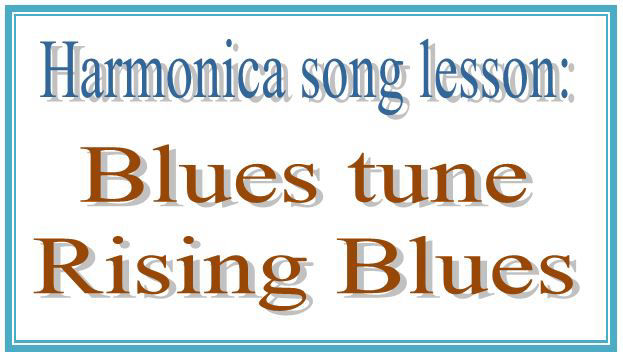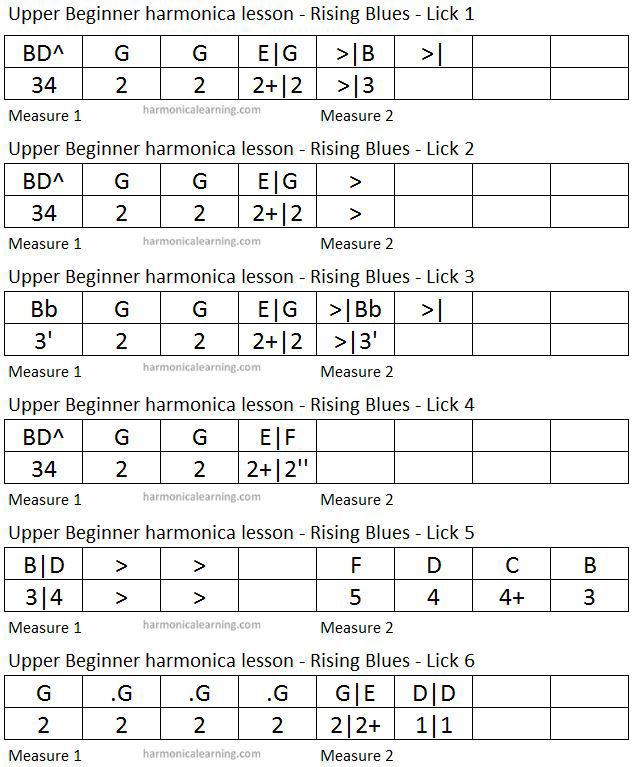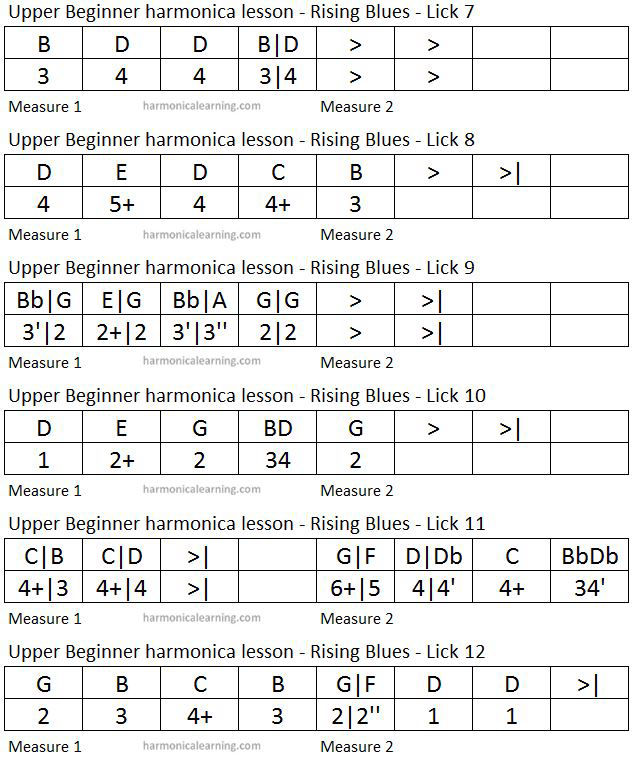
In this upper beginner harmonica lesson, you will learn to play a 12 bar blues style tune on your harmonica, entitled ‘Rising Blues’. You’ll practice the 12 licks that form the two song sections and play them on the provided backing track video. Today you'll take benefit of our online harmonica school teaching methodology and you'll experiment its effectiveness.
Many of us wanted at least once to be able to play blues songs like My babe by Little Walter, Easy, Help me, Juke; or some really cool harp solos like those played by Big Walter Horton, Slim Harpo and many other great harmonica players in the history of this instrument. Blues tunes on harmonica can be really easy as well as very difficult, in this lesson we’ll study a simple but funny and nice sounding little blues song.
During the 50 or so years, since harmonicas had become widely available around 1870, southern rural players, both black and white, had evolved highly sophisticated abilities on the harmonica and developed styles that, though individual, shared many characteristics of technique, style, and repertoire.
Harmonica players, as soon as they start to learn, they look for simple tunes, and blues is a great starting point to practice playing harmonica, especially in second position.
In order to perform this tune we use a C harmonica and we play in 2nd position. The song key is G major, and with the included videos in this lesson you’ll find the tab on which the notes and the harmonica holes are notated, allowing an easy play-along practise session. In this lesson I’m using a Hohner special 20.
How to read the video lesson tab:
One plus symbol means to blow the harmonica hole.
An apostrophe means to bend the note of a half-tone.
A double apostrophe means to bend the note of a whole-tone.
A triple apostrophe means to bend the note of three steps.
A dot before the notes means to use tongue blocking articulations.
Song analysis:
Playing difficulty level: Upper Beginner – Intermediate harmonica level.
Note bending skills: Draw bending on holes 2, 3 and 4.
Lesson focus: Playing the blues scale, integrating blues riffs and melodic blues licks on the 12 bars blues chorus form, tongue blocking slap and pulls articulations.
Provided backing track for this lesson: G major blues chord progression, medium tempo. A slow version of the tune and of the backing track are available too.
You cand download the lesson tabs using the following link:
Rising Blues – Easy blues harmonica tune tabs.
The song is composed of two choruses, each part contains 12 measures.
Below, the choruses tabs:


Following the chorus chord progression, a classic twelve bars major blues schema:
G7, G7, G7, G7
C7, C7, G7, G7
D7, C7, G7, D7
Let’s practice together the 6 licks that compose chorus 1 on the following interactive video:
Now we’ll practice the 6 licks that compose chorus 2 on the second interactive video:
Below, you’ll find the whole song played by the teacher and the backing track video for your to perform the tune.
Here was how to play this little blues tune. If you enjoyed learning this song on your harp, you might want to improve your harmonica skills: I suggest you to have a look at our online harmonica school courses here.
Share this page with your friends!